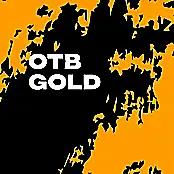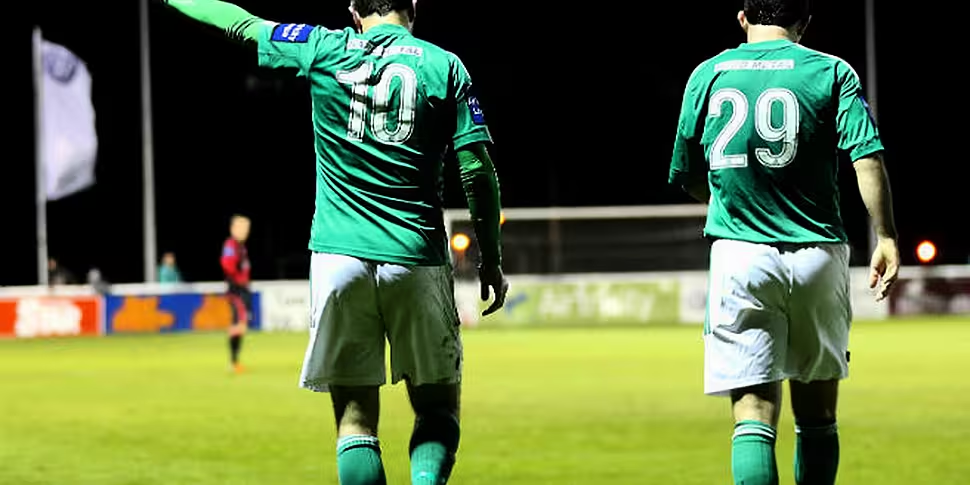The first glimpse you get as the DART rolls into Bray is the steel blue sea to your left. And as you settle into your spot in the press box, the eye naturally roves towards the Wicklow Mountains, clouded in mist behind the main stand of the Carlisle Grounds.
Bray Wanderers’ home stadium is easily the most beautifully located venue in the Dublin area – and as a League of Ireland match reporter who covers the Dublin area beat, it is one of the stadiums I have worked at most often over the past two years.
It is against this scenic background where great changes are afoot. Last month Bray Wanderers announced plans to become a “community-owned” entity where local volunteers take over control of the club and raise funds which will be ploughed back into the club and facilities.
Spearheaded by club president and local businessman Philip Hannigan, the club hopes to put itself on a sound footing in the turbulent landscape of Irish domestic soccer and forge a change of fortunes on and off the field.
“The old way, which was consistent with all Premier Division clubs, was not working,” he says of the way Bray and many other clubs have been run.
Even before my time on the League of Ireland patch, Bray Wanderers has been a club that valiantly punches above its weight.
The last of the Seagulls’ two FAI Cups came in 1999 and over the past five years Bray has generally battled against relegation.
They finished bottom of the Premier Division in 2009 but earned a reprieve due to the financial and administrative relegations of Cork City and Derry City.
And aside from the high point of sixth place in 2011, the last few seasons have seen Bray finish in the bottom two or three each season.
Indeed 2013 saw Bray avoid the drop by narrowly beating Longford Town 5 – 4 on aggregated and tense and tight promotion/relegation playoff.
This season is likely to be no different. In early April I was reporting at the 1 – 1 draw between Bohemians and Bray at Dalymount Park and the club’s new manager Alan Mathews – a regular guest on Newstalk Sport – spoke about the youthful nature of his team after they had squandered a 1 – 0 lead against 10-men.
"There are a lot of new players and it's going to take us some time for the kids to get used to playing at this level. The likes of Stephen McGuinness, Shane Byrne and Bob Maloney are all 18 to 20 years of age, playing at that level," he said after the game.
Throw in the likes of striker Ismahil Akinade (20), Adam Hanlon (21) and Graham Kelly (22) and it is a relatively inexperienced side pockmarked with a few older heads like David Cassidy and Danny O’Connor.
Recent tradition means Bray tend to have their eye drawn to the precipice beneath them but the club president wants to lead a change of tradition off the pitch.
“Clubs are struggling financially. There are terrific people putting their own money in to help their local clubs. But when people stop writing cheques, it becomes difficult and feeds into more debts. We had to look into building a self-sustaining model,” says Hannigan who confirms that debts reached “gigantic proportions”.
“When the club needed money, someone wrote a cheque. The club lost over a million over the past decade.”
Hannigan is adamant that the move to the new self-sustainable model will lead to a brighter future under the shade of the Wicklow Mountains. Following a club AGM late last year, shareholders asked Hannigan – who is a CEO of local tool-cutting company Hard Metal - to look into a new way to restructure a club which had haemorrhaged vast sums.
Shareholders have agreed to transfer ownership to the new company and Hannigan confirms that over half a million euros worth of that debt has been written off, with historical debts remaining.
And he adds that the “trick is implementation” as Bray move away from a model reliant on the goodwill of a benefactor.
Limited by guarantee, the new community-owned company will have seven directors or custodians, four of whom were part of the 10-member think tank Hannigan set up to look into changing the structure of the club. It also includes the chairmen of Bray Chamber of Commerce and the head of the Wicklow District League.
Below them is a council split into autonomous committees that take charge of distinct areas such as ground development and fundraising with local volunteers at the forefront.
Hannigan explains that forging links with local soccer clubs and schools in South Dublin and Wicklow is also a vital part of the club’s plans, with an emphasis on improving facilities such as the Carlisle Grounds but also giving greater access to the local community in the Bray catchment area.
The hope for Bray is that talented youngster will feel more drawn to playing for the club if the traditional exit route to England becomes blocked.

Bray Wanderers' kitman Michael 'Locker' Davies before their game against Sligo Rovers, May 2013. Photo: INPHO
It is almost a Barcelona-esque ‘More Than A Club’ philosophy with Bray Wanderers trying to become a central part of the local community.
“It’s true community spirit. If 500 or 5,000 volunteers give you their time, you have such a pool of talent. The reaction is amazing and we’ve had such a terrific response. It’s business-driven, I believe it is going to work and we intend to share the idea with other clubs,” says Hannigan.
In a league trying to live within its fairly meagre means, clubs will be looking closely to see if it works.
Download the brand new GoLoud App in the Play Store & App Store right now! We've got you covered!
Subscribe to OffTheBall's YouTube channel for more videos, like us on Facebook or follow us on Twitter for the latest sporting news and content.








